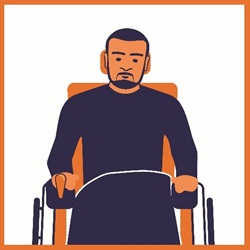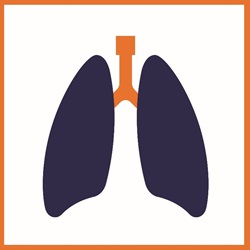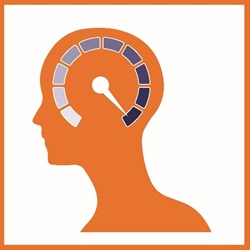Introduction
Motor Neurone Disease (MND) is a rare but devastating neurological condition which leads to progressive paralysis and ultimately death. An average GP can expect to see 1 or 2 cases in their career. Although it is rare many patients and doctors are both aware and fearful of it. Access an infographic from the MND Association.
After using this resource you should have:
- an improved understanding of what MND is, and the red flags for its diagnosis
- increased awareness of symptom management and available treatments
- an appreciation of the importance of coordination and a multi-disciplinary approach to achieving good care for people living with MND
- explored the importance of advance planning and timely support for changing symptoms
- considered the impact of a diagnosis of MND on a person and their family and carers and know where to go for further information.
Motor neurone disease (MND) or Amyotrophic Lateral Sclerosis (ALS) describes a group of related diseases affecting the motor neurones in the brain and spinal cord. Messages stop reaching the muscles, leading to weakness and wasting. It affects how a person walks, talks, eats and breathes. Not all symptoms necessarily happen to everyone and it is unlikely they will all develop at the same time, or in any specific order.
Although historically people have described four types of MND, there is now an increasing belief that MND is a spectrum. The different “types” are generally referring to variable symptoms, sites of onset and rates of progression of the same disease.
Amyotrophic lateral sclerosis (ALS)
The most common form, it involves both upper and lower motor neurones. It is characterized by limb weakness and wasting. An individual may notice they are dropping things or tripping when they walk. Life expectancy is 2-5 years from the onset of symptoms.
Progressive bulbar palsy (PBP)
Affects about a quarter of people with MND. It involves upper and lower motor neurones. Symptoms may include slurred speech or difficulty swallowing. Life expectancy: 6 months to 3 years from the onset of symptoms.
Progressive muscular atrophy (PMA)
Affects only a small proportion of people and causes damage to the lower motor neurones. Early symptoms may be noticed as weakness or clumsiness of the hands or feet. On average, people usually live for more than 5 years.
Primary lateral sclerosis (PLS)
A rare form: people experience stiffness and clumsiness in the hands or legs, or speech problems. Average life expectancy is 10 years+ although it may be life-limiting.
There is currently no cure for MND, but symptoms can be managed to achieve the best possible quality of life for people living with the disease. Visit the MND Association website to read key statistics about MND.
Motor neurone disease can be difficult to diagnose as:
- it is classified as a rare disease and not seen regularly by practitioners
- early symptoms may be mild and hard to detect
- an individual may wait some time before seeing their GP
- there may be an element of waiting for symptom progression to indicate MND
- it is a clinical diagnosis requiring the elimination of other possible conditions.
Red Flags tool
The MND Association worked with the Royal College of General Practitioners (RCGP) to create a Red Flag Tool, to support timely referrals to neurology and speed up the time to accurate diagnosis.
Diagnostic tests may include:
- Blood tests to screen for inflammatory conditions mimicking the symptoms of MND.
- Electromyography (EMG) – detects muscular electrical activity. When muscles lose their nerve supply, as in MND, their electrical activity is different – this test highlights abnormalities.
- Nerve Conduction Tests: measure the speed at which nerves carry electrical signals.
- Magnetic Resonance Imagery (MRI) scans: used to eliminate other conditions. Damage caused by MND is not shown on this scan.
Genetics
5-10% of people with MND will have a strong family history of the disease. These rare inherited forms of MND are caused by a mistake in the genetic code passed down from one generation to the next.
This video has been provided by HealthTalk.org.















